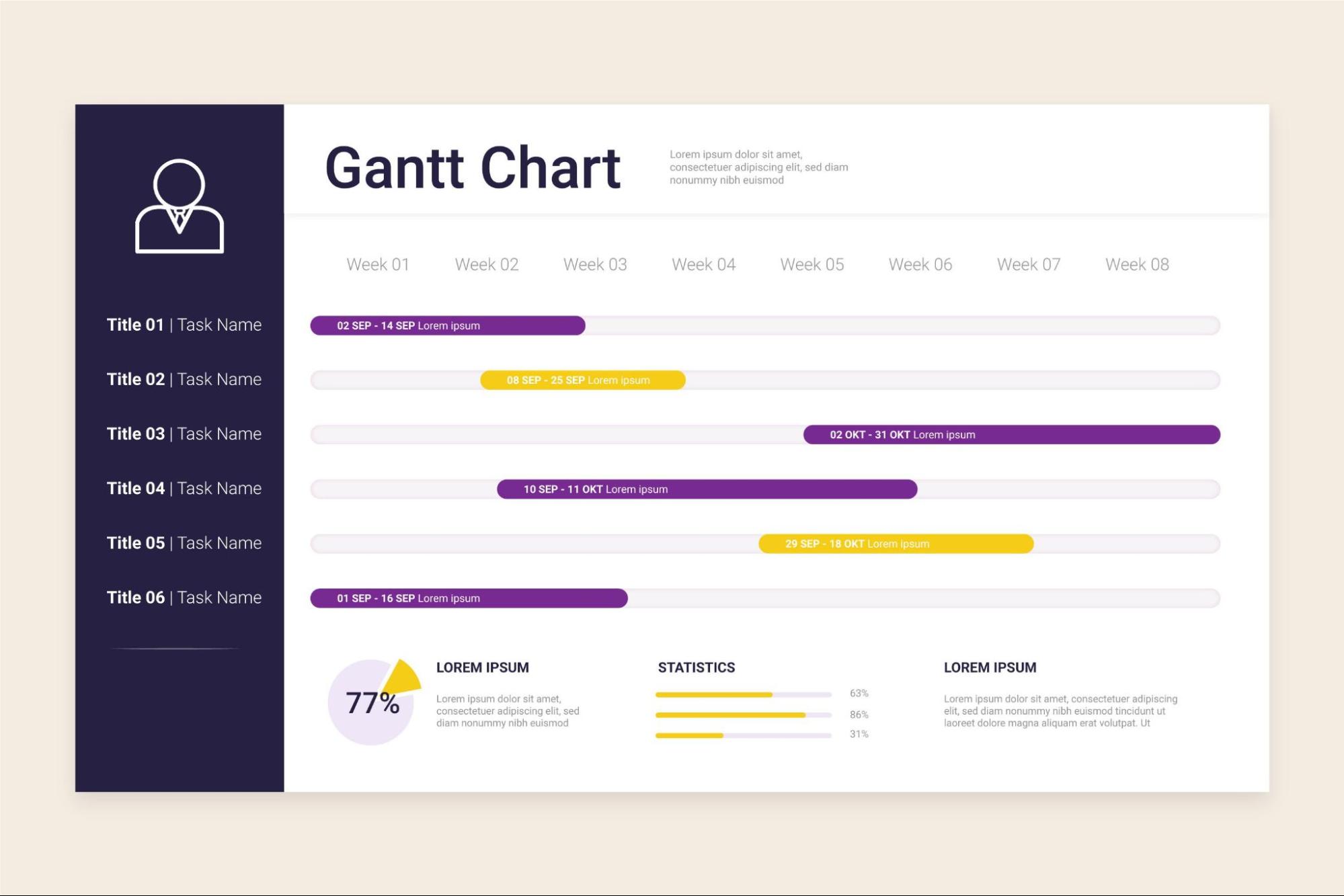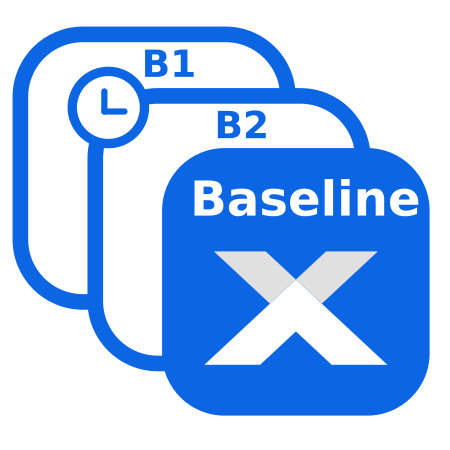Project management is a vast field that touches numerous industries and demands a diverse skill set. A common thread across the project management spectrum is the array of techniques that project managers employ to get the job done.
Regardless of the industry or specific project, effective project management techniques are crucial for teams to plan, manage, and achieve project success. While many techniques are available, we’ve compiled our top eight favorite project management strategies that every project manager should know.
Let’s dive in!
1. Work Breakdown Structure (WBS)
What it is: To tackle a massive project that feels overwhelming, smart project managers use a technique called Work Breakdown Structure (WBS). This involves breaking down the project into more manageable tasks.
How it works: WBS is not just about simplifying a complex project into smaller parts. It involves organizing these smaller tasks into a structured workflow, making the project more manageable.
Why it works: By breaking a project into smaller tasks, teams can clearly see task dependencies and determine when each task should be completed. This approach makes it much easier to estimate the time and budget required for each task, facilitating better resource planning and smoother management of stakeholder expectations.
With tools like monday.com, you can list all your tasks, estimate their duration, budget, and effort, and easily assign resources and identify dependencies. The platform’s drag-and-drop functionality allows you to tweak your workflow until it’s just right.
2. Critical Path Method (CPM)

What it is: The Critical Path Method (CPM) is a technique for estimating and monitoring a project's overall duration. This method involves breaking the project down into individual tasks, each with its own estimated duration.
How it works: Tasks are organized based on their logical sequence and dependencies. By adding up the durations of the longest sequence of dependent tasks, you can estimate the overall project duration. Any delays in these tasks will directly impact the project timeline.
Why it works: By focusing on and controlling tasks on the critical path, teams can ensure that projects are completed on time. Monitoring these critical tasks allows for better time management and timely project delivery.
3. Scrum

What it is: Scrum is a widely used framework within the Agile methodology. It organizes the project goal into a series of short development cycles called "sprints."
How it works: Teams refine the high-level project scope through iterations. At the beginning of each sprint, they determine the number of items they can commit to and create a sprint backlog, which is a list of tasks to be completed during the sprint.
Why it works: These iterative cycles increase the likelihood of delivering a product that fully meets customer requirements. Additionally, Scrum allows teams to deliver a viable product sooner than traditional methodologies, which is crucial for businesses where speed-to-market is essential.
Enhancing Scrum with Tools: monday.com’s Work OS provides a range of collaboration tools that support Scrum. Team members can share, view, and update project documentation in real time, ensuring everyone stays aligned. Moreover, with integrations like Jira or Gitlab for bug tracking and issue management, any changes made on one platform are automatically reflected on the others, keeping all information up to date.
4. SAFe
What it is: The Scaled Agile Framework (SAFe) is designed to implement Agile project management on a large scale. This project management strategies offer four levels to accommodate organizations of various sizes and requirements: Essential, Large Solution, Portfolio, and Full.
How it works: As organizations expand, SAFe's Agile practices provide a structured framework that helps teams develop superior products by quickly adapting to changing market conditions, customer needs, and emerging technologies.
Why it works: A 2020 study found that SAFe enhances team collaboration and increases efficiency. By leveraging SAFe, companies can make faster decisions, improve communication, optimize operations, and maintain a strong focus on customer satisfaction.
5. Kanban

What it is: Kanban is a visual project management technique that breaks down a project's workflow into smaller tasks and displays them in a way that keeps the entire team informed about progress.
How it works: Tasks in a Kanban system are typically organized into columns on a board. A standard Kanban board has three columns:
Some teams also add a 'Stuck' column to indicate tasks that are in progress but encountering obstacles.
Why it works: Kanban is ideal for projects with sequential workflows and minimal dependencies, allowing team members to focus on their specific tasks without distraction. The visual nature of Kanban boards enhances transparency, making it easier for everyone to see how individual efforts contribute to the overall project goals. This clarity improves focus and motivation, as team members can track their progress and see the direct impact of their work.
monday.com's user-friendly interface simplifies the creation and management of Kanban boards. The platform’s intuitive design and vibrant visuals make it easy to set up and maintain an effective Kanban board, ensuring that everyone stays aligned and productive.
6. Gantt

What it is: A Gantt chart is a type of bar chart that provides a visual timeline of project activities. It is particularly useful for displaying what tasks need to be completed on specific days.
How it works: Gantt charts enable project managers to quickly assess a project's current progress. By visualizing tasks along a timeline, they can easily identify any delays and take corrective actions to ensure the project stays on track.
Why it works: Gantt charts are effective because they display:
-
The project's start date
-
All project tasks
-
The team members responsible for each task
-
The start and finish dates of tasks
-
The duration of each task
-
Task dependencies and key milestones
Using monday.com, you can effortlessly create Gantt charts directly from your project board. This feature is one of eight different data visualization options available, allowing for real-time updates whenever project data changes. This ensures that everyone involved has the most current information, keeping the project on course and well-organized.
7. PERT
What it is: The Program Evaluation and Review Technique (PERT) focuses not only on the duration of tasks on the critical path but also on the relationships between all project tasks. Unlike sequential event diagrams, PERT arranges tasks in a flowchart format.
How it works: PERT enhances the accuracy of task duration estimates by incorporating three different time estimates:
-
Optimistic time: The shortest time in which a task can be completed.
-
Pessimistic time: The longest time a task might take.
-
Most-likely time: The best estimate of the time required to complete the task, assuming everything proceeds as normal.
By using these three estimates, PERT provides a more comprehensive and realistic view of the project timeline, helping project managers anticipate potential delays and plan accordingly.
Why it works: PERT is particularly valuable for complex projects where task durations are uncertain. By accounting for variability in task completion times, PERT helps in creating more accurate schedules and improving project planning. For a deeper dive into how PERT can benefit your project management, be sure to check out our comprehensive guide on PERT.
8. Waterfall
What it is: Waterfall is a traditional, structured project management strategies that organizes projects in a linear and sequential manner.
How it works: Projects are divided into distinct phases, each of which must be completed before the next phase begins. This step-by-step process ensures that the project progresses in a logical sequence, with each phase building on the work completed in the previous one.
Why it works: The clear, sequential phases of the Waterfall method simplify project planning and make it straightforward to track progress. This makes it ideal for projects that require strict adherence to a fixed timeline or budget, such as large-scale infrastructure projects. The predictability and orderliness of the Waterfall approach help ensure that all project requirements are met before moving on to the next phase, reducing the risk of unexpected issues.
Elevate Your Projects This Year with These Top Project Planning Techniques
We've covered eight essential project planning techniques that can drive your projects to success from start to finish. No matter which method you choose, you can count on monday.com to support you every step of the way.
Our Work OS provides all the tools you need to manage your projects effectively, allowing you to customize your workflow to fit your specific needs. Let monday.com adapt and grow with you, making project management more efficient and enjoyable. Start today and discover your new go-to project management techniques!





